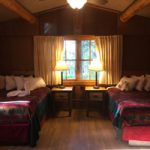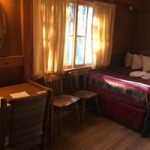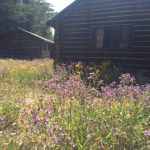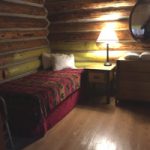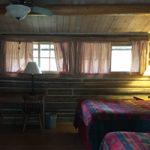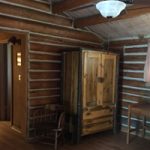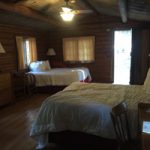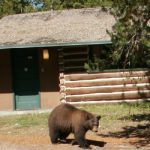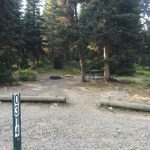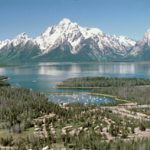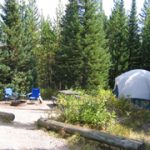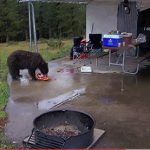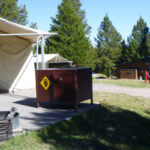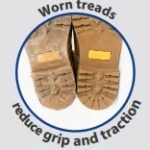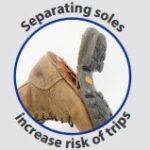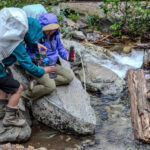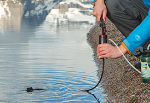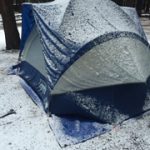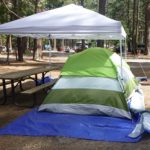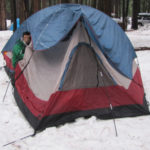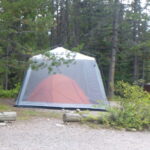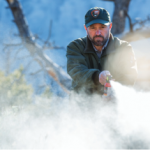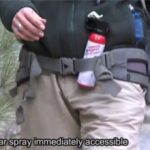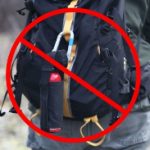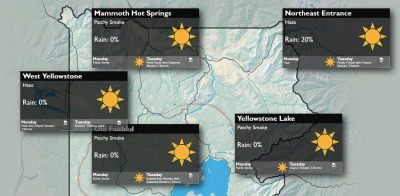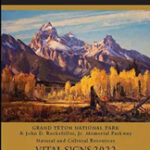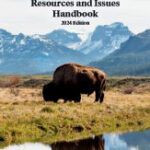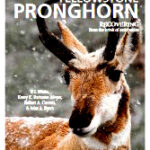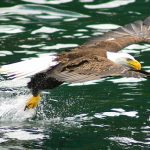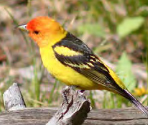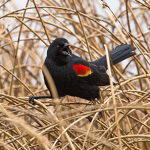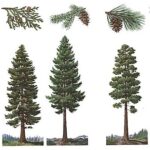We recommend some things to do in advance
(some of them should be done well in advance)
of our between-summer-and-fall-quarter trip to Grand Teton National Park.
It can be difficult to coordinate timing of activities if we don’t all stay in the same area,
so we’ve all stayed at the same area / campground / cabins for at least part of (usually most of) the time.
Even if you have not made a complete decision to go on the trip,
deciding if your budget can afford a cabin or a campsite is important.
Take a look at Colter Bay Cabins:
and campground
and Colter Bay tent cabins
Having campsites near to or next to each other in the same campground loop is more fun.
(Especially when we can get some of the best campsites by having people make reservations as early as possible.)
The trip will be August 13 – 31 2025 +/- (between summer and fall quarter).
The “Outdoor Club” does not get campsites (or any overnight accommodations),
students on the trip get them and share them as they want to.
6 months before the Outdoor Club 2025 trip to Grand Teton National Park, people who went on the 2024 trip and are sure they are going on the 2025 trip, got together at 6:45 a.m. to get campsites. They got five campsites for August 13 – depart Aug. 27, in what we think is the best campground, Colter Bay in a tents-only loop (no motorhome generator noise). The loop also is at a slightly higher elevation that we have found has better cell phone reception (we drove around and checked). It is a short walk to the pay showers, laundromat with reliable free wifi, store, restaurants. We got campsites around the outside edge of the loop, with forest behind and fewer nearby neighbors, certainly not in the center of the loop next to the restroom and dumpster noise, or with a road and traffic noise right behind a site. People have camped in these previous years and liked them the best.
The campsites hold a maximum 6 people and two vehicles. Close to the start of the adventure, some of the days and some of the campsites will be cancelled if they are not needed.
We do often have three person carpools, as many sedans that can seat four are better with only three people so there is space for gear, multiple ice chests, etc.
Two of these three person carpools are the correct number of people / vehicles for one campsite.
Sometimes people want to drive with only two people in their vehicle. We have also regularly had people driving by themselves, for example they had other plans of places / relatives to visit and did not want to carpool, including a guy who went back east to his next college after the trip.
Some people do not want to share one bear-proof-if-used-properly food locker between six people and would rather have only four people in their campsite.
The sites are $66.08 per night.
IF six people (and maximum 2 vehicles) share a site, that will be $11.02 per person, per night,
IF four people share a site, that will be $16.52 per person, per night,
IF only two people share a site, that will be $33.04 per person, per night.
– – – – – – – – – – – – – – – – – – – – – – – – – – – – – – – – – – – – – – – – –
Besides choosing your overnight accommodation,
there is much more to do in advance for a fun trip.
Decide on how you will get to Grand Teton National Park.
Details about how to get to Grand Teton National Park,
-fly all the way,
-or get a cheap ticket to fly part way (example San Jose to Salt Lake City, Utah) and then rent a car and drive the last 6 hours,
-or get a cheap ticket to fly part way and then take the bus into Jackson, Wyoming (the closest town to where we stay)
– or use other public transportation the whole way
-or drive by yourself
-or drive in a small or huge carpool or in a caravan of carpools.
Details are at the Grand Teton trip trip transportation webpage.
Decide on your driving route in advance.
Below, the driving route (recommended by previous trip participants) across California, Nevada, part of Idaho and into Wyoming:
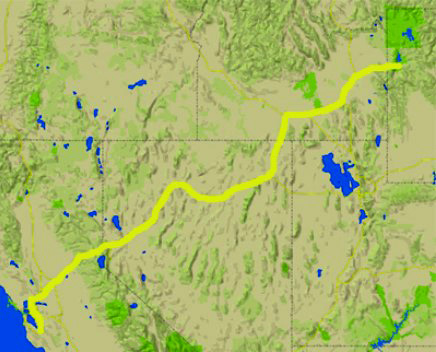
Driving notes for the Tetons trip to help you SAVE MONEY ON GAS AND TIME ON THE ROAD, are at the Grand Teton trip trip transportation webpage.
For some previous trip participants, the drive home took a week, or longer,
with stops at multiple National Parks in various western states.
Some people have extended their trip into Canada, and if you might you need to do some things before you leave. See Logistics for a side trip to Canada from Grand Teton National Park
– – – – – – – – – – – – – – – – – – – – – – – – – – – – – – – – – – – – – – – – – –
The last time you used your camera, and took out the memory card / chip
to look at your photos on a laptop, did you remember to put the memory chip back in?
Where is the charger for your digital camera?
Mend things before the trip,
that tiny tear in the rain pants
will be easier to fix at home than it will be in the campsite when it becomes a big rip
and it is raining heavily.
Your hiking boots do still have tread left on them, correct?
Are your boot laces about worn out?
Take a close look. People have sometimes not noticed separating soles – which increase your risk of trips.
Have you been washing / rinsing / drying clothes with a favorite scented product?
Scented attracts mosquitos and other unpleasant insects,
so for the wash just before the trip you might want to switch to unscented.
You might also consider choosing clothes that are not black, orange or red as they may attract mosquitos. Lighter colors instead of darker could be a good idea, too. Nature.com reported that
“the US military changed its dress shirts from dark blue to light blue in part to mitigate mosquito biting.”
And you could go through your toiletries, shampoo, body soap, lotion, suntan lotion, deodorant etc. and only pack unscented since that great floral scent in the shampoo will attract mosquitos.
Don’t bring clothes camping that have been rinsed or dried with mosquito-attracting scented softeners (plus, dryer sheets can make a greasy stain on clothes if they get stuck to them, and the softeners can decrease the lofting and wicking of garments).
– – – – – – – – – – – – – – – – – – – – – – – – – – – – – – – – – – – – – – – – – –
The club loans out a water purifying pump for group hikes. If you have your own it will be much easier to back-wash it and/or take it apart and clean the exterior of the filter cartridge at home before the trip, than waiting until the trip when it starts to not work well. (Follow the manufacturers instructions, which you kept a copy of when you bought the pump, yes?)
Water purifying tablets are not advised because some brands are not effective on Giardia AND Cryptosporidium and we prefer to use a water purifying pump because it is easier and faster.
If you decide to do without a water-purifying pump, please note:
From National Center for Biotechnology Information, U.S. National Library of Medicine “Diarrhea is the most common illness limiting long-distance hikers. Hikers should purify water routinely, avoiding using untreated surface water. The risk of gastrointestinal illness can also be reduced by maintaining personal hygiene practices and cleaning cookware.” Preferably use a water purifying pump, but bring chemical means should the pump die. Be sure the chemical method you choose will work against cryptosporidium and giardia and note how long (four hours??) the water must be treated for the treatment to be effective. Note also that iodine tablets are not effective against cryptosporidium / giardia and some people are allergic to iodine.
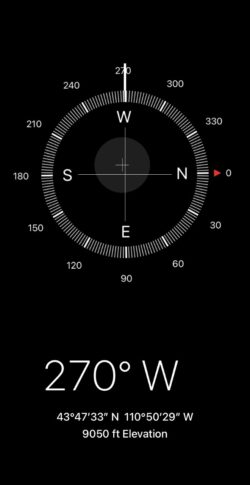
Find a compass, altitude, latitude and longitude on your cell phone. The photo above was taken of a cell phone near Lake Solitude in Cascade Canyon.
– – – – – – – – – – – – – – – – – – – – – – – – – – – – – – – – – – – – – – – – – –
During any long hike or backpack,
To truly be able to leave no trace and follow backcountry rules about camping the proper distance from a lake or digging your personal latrine hole the proper distance from water, etc.,
you will need to know how far 100 or 200 feet is.
Lay out a tape measure at home and walk it and count your paces.
– – – – – – – – – – – – – – – – – – – – – – – – – – – – – – – – – – – – – – – – – –
A national park ski resort had advice that also applies to any trip to higher altitude than at home:
“We strongly recommend increasing your water intake several days before your ski trip, which will help keep you hydrated, give your body a chance to adjust to the lower oxygen levels at a high altitude,
and speed up your acclimation time.”
![]()
Are you sure the tent you are borrowing has all its parts? Was it put away after the most recent trip without fully drying it, and now it has mold? (Yup, you might guess that happened on a previous weekend trip and the guy did not discover it until he was on the trip. – They slept in the car.)
We advise people to bring tents to a pre-trip meeting and pitch them, as some turn out to not be adequate for use in rain, but might be with an additional huge tarp over them.
There are crucial things wrong with each of these tents.
Don’t buy a cheap tent has reasons why and more examples of tents to NOT bring.
The campsites students usually get for the Tetons trip will not be comfortable for people with a truck tent or SUV tailgate tent because the parking is parallel to and at the edge of the road (not a back-down-into parking space), so anyone using a tent like this would have vehicles driving right next to their tent all day and night. And a second vehicle would not fit in the parking pad.
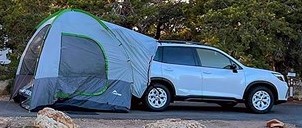
If you expect lots of mosquitos you could pitch your tent IN a screenroom:
Consult with your doctor, Blue Cross/Blue Shield, Kaiser Permanente,
to see if you are up to date on your Tetanus vaccination.
The Centers for Disease Control and Prevention (CDC) recommends
a Tetanus vaccination every ten years for adults.
One of these:
• Tetanus and diphtheria (Td) vaccine
• Tetanus, diphtheria, and pertussis (Tdap) vaccine
https://www.cdc.gov/vaccines/vpd/tetanus/index.html
Is it time to see the dentist about that tiny ache?
You should plan to bring an adequate supply of your prescriptions for a longer-than-you-anticipated road trip, so checking in advance if you have enough or need to do refills is wise.
Also check over-the-counter remedies (and check their expiration dates)
for any ailment you get that could spoil your trip, possibly including:
Benadryl (diphenhydramine)
aspirin, Ibuprofen, acetaminophen, Naproxen Sodium,
athlete’s foot, anti-itch hydrocortisone,
cold and cough syrups and lozenges, allergy tablets / eye relief / sinus relief, stomach ache, Breathe Right, Imodium, calamine lotion.
Over-the-counter medications can be ineffective if not used as directed on the label, or can even cause potentially long-lasting or even life-threatening consequences. “Oooops, was I supposed to take one of this tablet every six hours or two every four hours?” Don’t expect that you will remember, even if it is something you take regularly. If you re-pack them into small containers be sure to copy and pack the instructions (and expiration date) with them.
The faculty advisor and spouse are not allowed to share any over-the-counter remedies, yes, even just aspirin, with students. The small store at Colter Bay has only a few items. The big groceries/ pharmacies in town have just about anything you could want, but the town of Jackson is over 40 miles from where we stay overnight so bringing what you might need could keep you much happier.

When you are at home you can usually quickly get issues with your vehicle resolved at a nearby mechanic or dealer of your make/model, so many people don’t regularly check their vehicle’s fluid levels, tire pressure, brake wear, etc.
People on a budget often put up with not-essential-for-safe-driving problems with their cars.
But deferred repairs and maintenance can spoil a road trip
and be much more expensive and/or difficult to fix when you are on the road.
The Road trip vehicle prep and recommended service webpage includes things people can do without paying a mechanic and a checklist. It also has links to videos & webpages about how to check your tires for sufficient tread, how to check bulbs, choose wiper blades, change a flat tire, jump start a dead battery and more. You will get better mileage and a safer ride with tires that are properly inflated – the webpage has details.
Where did you store the snow chains / cables? If you do not have them, in the rare instance that there is snow, the Rangers can refuse to let you in the park.
Besides the chains, do you also need new wiper blades, deicing fluid for the windshield washer tank, a windshield scraper or deicer? Pack something to kneel on when you are putting the chains on. Is it time for new antifreeze or a brake job? Do the defroster and heater actually function? Do you know how to use your jack and is it still in the car?
Make spare vehicle keys to have in different places, give to others in your carpool. It is worth investing in a spare vehicle key or two or three, in the pockets / daypacks of various people, since your cell phone does not function everywhere in the park and you could need to take a bit of a hike to get to a hotel front desk to try to use their phone to get an Auto Club locksmith to unlock your car when you lock the keys in it. And getting that help to your vehicle can take quite awhile! If you rent a vehicle for the trip, talk to me about where you might be able to find a spare key in that rental.
You need to agree that you will not ride a motorcycle to / on the trip because you are not safe during lightning (the tires and/or your helmet will not protect you). If you intend to drive a convertible and it has an electric power top, be sure you know how to put the top up manually in case the push-button function stops working. Rain storms can come in quickly and heavily. You should have alternate ways to get around if lightning is forecast, because
you are not safe during lightning in a convertible or on a motorcycle.
“The only safe place is inside a substantial building or hard-topped vehicle.”
CSAA or other Auto Association memberships usually give you (or maybe your parent? or a passengers parent?)
free maps.
Paper maps can be easier to use for planning. Yes, you can download maps on your phone, but paper maps can be essential for driving through areas without phone service and even with electronic device failures, you will have a map if you need or want to change routes.
You will want at least the state maps of California, Nevada, Idaho, Wyoming and Montana. You might also want, for the drive home through more National Parks, Washington and Oregon or Colorado, Utah, New Mexico and Arizona. And you might want British Columbia and Alberta Canada.
This advice above is from the trip equipment page, which is important reading for the Grand Teton National Park trip.
– – – – – – – – – – – – – – – – – – – – – – – – – – – – – – – – – – –

Plan in advance how you will split the park entrance fee.
Each carload will pay their own park vehicle entrance fee. Effective June 1, 2018 (and we expect it to be the same in 2025) the park entrance fee for Grand Teton National park will be $35 per vehicle, $30 per motorcycle or $20 per person, and an annual (Grand Teton park only) park pass will cost $70. $35 is for for seven days (only one week and most people go on this trip for more than one week and want to see adjacent Yellowstone National Park as well, which has its own weekly fee).
If you stay for more than one week and visit Yellowstone, this would come to $105 if you buy 3 separate $35 passes, so you save money by investing in a $80 National Parks and Federal Recreation Lands annual pass.
Then you will get in free to see other national parks on the way to and from Grand Teton and have free entrance to Yosemite if you go on a winter adventure with the club.
OR better yet, find someone to carpool with who already has a National Parks and Federal Recreation Lands annual pass
OR find someone who is an active duty U.S. military member or dependent and has their ID Card (CAC card or form 1173) and can get a free national parks pass https://store.usgs.gov/MilitaryPass
OR find someone who is 62 or over to get a lifetime seniors pass for $80.
(The passes can’t be transferred/shared so the person who gets the pass needs to be in the vehicle and show a photo ID.)
The pass will get you FREE ENTRANCE (for one full year) to any of the 63 U.S. National Parks (and many more National Historic Reserves, Monuments, Seashores). California has nine U.S. National Parks, Utah has five, and Colorado has four, Washington and Wyoming each have two, Montana and Oregon each have one U.S. National Park.
– – – – – – – – – – – – – – – – – – – – – – – – – – – – – – – – – – –
If it is necessary for you to attend religious services during the trip you need to plan ahead
by researching where you can attend, and let people in your carpool know of your needs and the dates / times / locations.
– – – – – – – – – – – – – – – – – – – – – – – – – – – – – – – – – – –
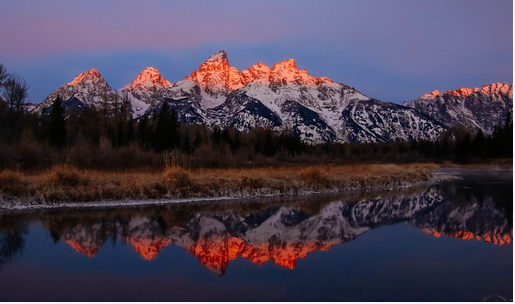
You’ll be bringing a lot of gear, so
4 people should be the limit in a 5-passenger SUV,
3 people should ride in a sedan that seats four,
and some cars really should only have 2 people.
If everyone brought a large container of full-sized toiletries, as in the left of the photo below, they would take up too much space. By bringing travel/sample sized containers of shampoo, lotion, etc. in a smaller bag, as in the example on the right in the photo below, there is room for even a full sized can of spray insect repellent.
NO!→ 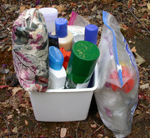 ← Yes!!
← Yes!!
Tear off the appropriate size and number of sheets of foil you will need, fold and pack them with a few plastic sandwich bags as needed instead of bringing whole packages.
Yes! → 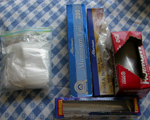 ← No
← No
If you think you can fit five people in a vehicle that seats five AND ALL THEIR GEAR, you need to plan early for how everything will fit (it likely can’t unless you have a large cartop carrier – see advice at Carpool Faqs).
You might even want to get together a few days in advance of the trip, with the bags people want to bring, and try packing.
– – – – – – – – – – – – – – – – – – – – – – – – – – – – – – – – – – –
If there is any chance you will want to make a side trip into Canada, you will need a passport
and a Canadian Non-Resident Interprovincial Motor Vehicle Liability Card,
sometimes called a “Canadian ID card”
(FREE from your insurance carrier).
See: logistics for a side trip to Canada from Grand Teton National Park.
– – – – – – – – – – – – – – – – – – – – – – – – – – – – – – – – – – –
Your safety in grizzly bear territory is a must read, especially about bear spray.
Start looking around for downloads and links to info
to put on your smart-enough-phone to be able to access info more easily, including webpages about the trip AND
Planets Visible in the Night Sky in Grand Teton National Park
https://www.timeanddate.com/astronomy/night/@5826327
Jackson Hole weather
http://www.mountainweather.com/JACKSON.htm
Weather map: “GeoColor is a multispectral product composed of True Color (using a simulated green component) during the daytime, and an Infrared product that uses bands 7 and 13 at night. During the day, the imagery looks approximately as it would appear when viewed with human eyes from space. At night, the blue colors represent liquid water clouds such as fog and stratus, while gray to white indicate higher ice clouds, and the city lights come from a static database that was derived from the VIIRS Day Night Band.”
https://www.star.nesdis.noaa.gov/GOES/sector_band.php?sat=G16§or=nr&band=GEOCOLOR&length=12
For the drive: Tetons area road conditions (Wyoming Department of Transportation)
http://www.wyoroad.info/pls/Browse/WRR.STATIC5?SelectedDistrict=3
A drawing of the peaks with the names of the peaks, from various locations:
https://www.nps.gov/grte/learn/management/upload/profile.jpg
 Old Faithful in Yellowstone erupts on the average every 60 to 110 minutes, for 1 1/2 to 5 minutes, with an average height of 130 feet. Scroll down at https://www.nps.gov/yell/learn/nature/hydrothermal-features.htm for the next eruption prediction. “The famous geyser currently erupts around 17 times a day and can be predicted with a 90 percent confidence rate within a 10 minute variation.” Our favorite memory of an Old Faithful eruption was at night with light from a full moon and lightning from a thunderstorm in the background.
Old Faithful in Yellowstone erupts on the average every 60 to 110 minutes, for 1 1/2 to 5 minutes, with an average height of 130 feet. Scroll down at https://www.nps.gov/yell/learn/nature/hydrothermal-features.htm for the next eruption prediction. “The famous geyser currently erupts around 17 times a day and can be predicted with a 90 percent confidence rate within a 10 minute variation.” Our favorite memory of an Old Faithful eruption was at night with light from a full moon and lightning from a thunderstorm in the background.
Sometimes you can see Old Faithful geyser and another geyser erupting at the same time:
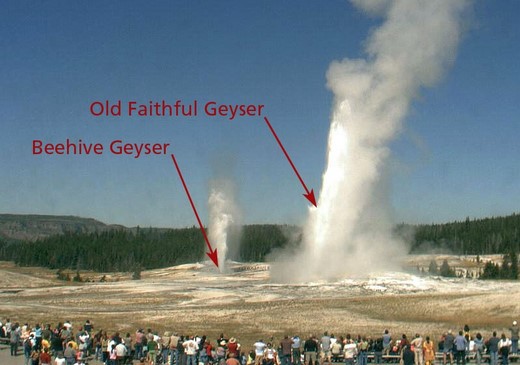
The park offers this photo of the locations of all the major geysers viewable from the Old Faithful Webcam:

and see more at Yellowstone
An app for Grand Teton National Park info
(best downloaded before you get there when you can find reliable internet),
with info about visitor centers, historic places, natural features, and services throughout the park.
“Even without cellular service, the app will be able to share your location on the map and bring up all site content.”
https://www.nps.gov/grte/planyourvisit/nps-grand-teton-app.htm
and you should get the Yellowstone app as well:
https://www.nps.gov/yell/planyourvisit/app.htm
You can download a free copy of these Red Cross first books to your smart-enough-phone to bring with you (perhaps especially useful on the looooong hike many people do, and/or if you decide to backpack), the Red Cross Wilderness and Remote First Aid Emergency Reference Guide and Red Cross Wilderness and Remote First Aid Pocket Guide



Lightning strikes in the last 24 hours are recorded at:
https://www.lightningmaps.org/blitzortung/america/index.php?lang=en
https://www.accuweather.com/en/us/national/severe-weather-maps
Using the lightning strikes links above
you can check out where the storm lightning hits are moving
and it can help you decide
if you are going to the swimming pool, taking a shower now or later,
and when you actually hear thunder you can check out where it hit (closer to Yellowstone, or nearby at north Jackson Lake, or . . . YIPES, that really was nearby!).
Yellowstone National park has a live weather display
https://www.nps.gov/features/yell/kiosk/weather.html
Books to download for free instead of buying them at a visitor center, (well worth looking at for info about animals and much more before you go on the trip) are listed at Recommended Reading
___________________________________
Grand Teton National Park birds has photos and details about the most common birds we can hope to see
including Bald Eagle, Canada Goose, Golden Eagle, Great Blue Heron, Great Gray Owl, Harlequin Duck, Loon, Magpie, Northern Flicker (woodpecker), Osprey, Pelican, Ouzel, Peregrine Falcon, Raven, Sandhill Crane, Steller’s Jay and Trumpeter Swan, with links to calls / songs from most of them to listen to.
and you can Download photos of over a hundred birds of Grand Teton National Park
https://www.audubon.org/climate/national-parks/grand-teton-national-park
and see Birding in Wyoming https://www.audubon.org/news/birding-wyoming
___________________________________
Many people think of trees the shape of the ones shown below as “pine” trees,
but only one of these three is actually a pine tree and we see it in Yosemite rather than on the Grand Teton Trip. If you are interested in learning more, see tree identification in Grand Teton Park.
___________________________________
People who have not done a lot of camping sometimes do not know
that elk are not just grown-up deer.
Or they may tell people that they saw an elk in the campground we use, or at the cabins area, where we see deer regularly, but seeing elk there is highly unlikely.
Was that a wolf or a coyote or a fox? A deer, an elk or a moose?
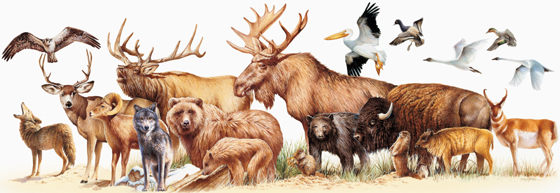
Rocky Mountain mammal size comparisons has photos and comparisons of beavers, squirrels, pika, marmot, elk, moose, bison, fox, coyote, wolf, golden-mantled ground squirrel, chipmunk, Red Squirrel (also known as) Chickaree, Unita Ground squirrels, bobcat, lynx, mountain lion (cougar), pine marten, mountain goats, bighorn sheep, pronghorn, grizzly and black bears, as well as tundra swan, trumpeter swan, adult and juvenile Bald Eagles.

It is also likely that each person on the trip will see bison from a distance. But not in the Grand Teton park campgrounds. You might see bison in some of the Yellowstone National Park campgrounds, this one in Norris:
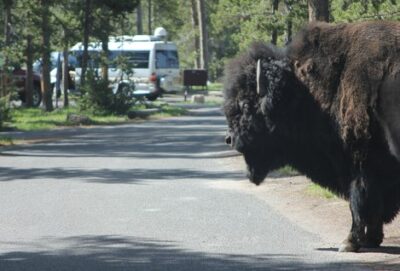
Before a bison charges is important reading.
You should read the sample trip agreement before you come to sign up.
The answer to the question WHY ARE THERE SO MANY RULES? is here.
– – – – – – – – – – – – – – – – – – – – – – – – – – – – – – – – – – – – – – – – – –
(Please consult with your doctor before any trip.)
Yosemite Search and Rescue has recommendations that also apply to Grand Teton National Park trips:
“Recreating with medical conditions:
Medical conditions should not prevent recreationists from enjoying Yosemite’s vast wilderness; however, proper management of medical conditions is essential for a successful wilderness experience. Whether hiking in a party of two or ten, it is important for fellow hiking companions to be aware of medical conditions in the group and proper treatment and management of medical conditions. Recreationists who are prescribed medication should carry the medication (plus a few extra doses) in a personal pack so that they don’t miss a dose if an outdoor outing goes awry or longer than anticipated.”
Centers for Disease Control advice about travel to high elevations:
“Radial Keratotomy
Most people do not have visual problems at high elevations. At very high elevations, however, some people who have had radial keratotomy procedures might develop acute farsightedness and be unable to care for themselves. LASIK and other newer procedures may produce only minor visual disturbances at high elevations.”
“Diabetes Mellitus
Travelers with diabetes can travel safely to high elevations, but they must be accustomed to exercise if participating in strenuous activities at elevation and carefully monitor their blood glucose. Diabetic ketoacidosis can be triggered by altitude illness and can be more difficult to treat in people taking acetazolamide. Not all glucose meters read accurately at high elevations.”
An organizer for Yellowstone trips said:
“If you have diabetes, consider carrying the following with you to Yellowstone: twice as much insulin as is usually needed; extra syringes (or pump); a glucose meter with extra batteries and extra test strips; supplies to treat low blood sugar, such as glucose tablets or gel; other medications, such as glucagon; and a letter/prescription from a doctor (in the event extra insulin is needed). If you are participating on an overnight trip, be prepared to protect your insulin from freezing or overheating. . . some diabetics have reported having problems with their insulin pumps at altitudes greater than 8,000 feet.”
The author of this webpage, (written as a reading assignment for my students), does not give any warranty, expressed or implied, nor assume any legal liability or responsibility for the accuracy, completeness, or usefulness of any information, product, or process included in this website or at websites linked to or from it. Users of information from this website assume all liability arising from such use.
